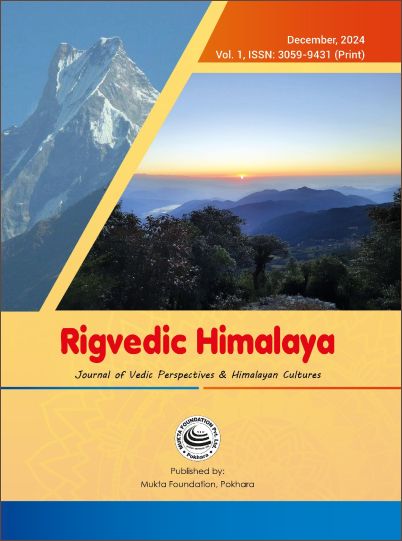Nature in the Vedas: Sources of Life and Psychic Healing
DOI:
https://doi.org/10.3126/jorh.v1i1.75192Keywords:
Co-existence, Eco-criticism, Healing, Soma, VedasAbstract
This study explores the Vedas' portrayal of nature as a primal force that rejuvenates humanity, fostering a harmonious world characterized by ecological equilibrium and bestowing a pantheistic quality upon natural beings and objects. The hymns of the Vedic Samhitas advocate for nature as a powerful agent capable of alleviating the grief and anguish of modern society. Divinity, as invoked in the Vedas, reflects a sense of equality among gods, humans, animals, and natural objects. This paper employs an eco-critical lens to analyze select hymns from the Rig Veda, arguing for the interconnectedness of all earthly beings and objects. By intertwining divinity with nature, the Vedas highlight the inherent significance of the natural world. The study draws on eco-critical theory as analyzed by Helgeson (2012), Vakoch and Mickey (2018), Horton (2020), Filipova (2022), and Misiaszek (2023) to rationalize the interrelation of the Earth's constituent parts. Nature theory posits that nature fosters peace and sustainability—a concept already envisioned in the hymns of the Rig Veda. Therefore, this study concludes that the Vedas emphasize a symbiotic bond between nature and humanity, creating a synergistic world. A peaceful mind, as suggested by the Vedic mantras, can be achieved by valuing and integrating natural beings and objects into everyday life. Although Vedic scriptures have traditionally been revered as religious texts, they gain greater significance when applied practically for the betterment of humanity.
Downloads
Downloads
Published
How to Cite
Issue
Section
License
Copyright (c) 2024 Mukta Foundation Pvt. Ltd

This work is licensed under a Creative Commons Attribution-NonCommercial 4.0 International License.
This license enables reusers to distribute, remix, adapt, and build upon the material in any medium or format for noncommercial purposes only, and only so long as attribution is given to the creator.




